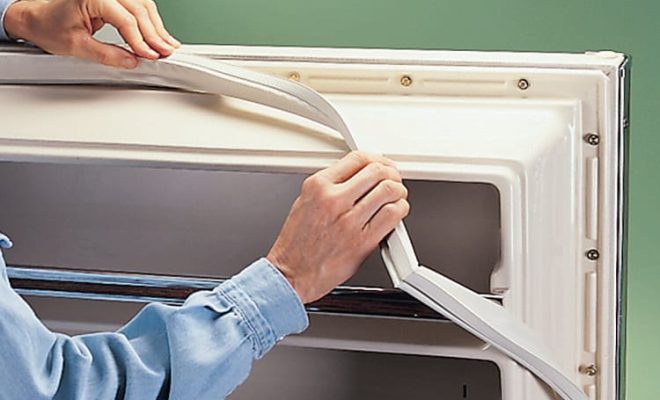The Importance of a Properly Functioning Refrigerator Door Seal and How to Fix It

Introduction:
A refrigerator is an essential appliance in every household, but some issues can prevent it from working efficiently. One common problem is when the refrigerator door seal stops working effectively. This article will discuss the importance of a properly functioning refrigerator door seal and provide guidance on how to fix common door seal issues.
The Importance of a Properly Functioning Door Seal:
The refrigerator door seal, also known as the gasket, plays a crucial role in maintaining the efficiency of your fridge. If the door seal stops working or becomes damaged, there can be several negative consequences:
1. Energy Efficiency: A damaged or ineffective refrigerator door seal may cause cold air to escape, forcing the appliance to work harder to maintain the desired temperature. This leads to increased energy consumption and higher energy bills.
2. Food Spoilage: A poorly functioning door seal can allow warm air to enter the fridge, raising its internal temperature and potentially causing food stored inside to spoil quickly.
3. Excess Moisture: A faulty door seal may lead to excess moisture buildup inside your refrigerator or freezer, increasing the risk of mold growth and negatively impacting odors.
How to Fix Common Door Seal Issues:
If you suspect that your refrigerator door seal is not functioning correctly, follow these simple tips for diagnosing and fixing the problem:
1. Inspect the Gasket: Begin by examining the door seal for any visible cracks, tears, or damage. If you notice any signs of wear, you’ll need to replace it with a new one.
2. Clean the Gasket: Sometimes, dirt and debris can accumulate on the gasket, preventing it from forming a tight seal with the fridge body. Using warm soapy water and a soft cloth or sponge, gently clean all around the gasket and ensure that it’s free from any buildup.
3. Check for Alignment: A misaligned fridge or freezer door can also compromise the seal’s effectiveness. Inspect your refrigerator door for any sagging or uneven alignment, and check if the hinges need tightening.
4. Test the Seal: Close a small slip of paper in your refrigerator door so that one end remains outside. Gently tug on the paper – if it slides out easily without resistance, your door seal might not be working correctly, and you should consider a replacement.
5. Replace the Gasket: If your gasket is damaged or not sealing effectively, order a replacement from the refrigerator manufacturer or an authorized parts supplier. When the new gasket arrives, follow the instructions for installation, which usually involves loosening or removing screws holding the old gasket in place and then attaching the new one.
Conclusion:
Properly maintaining your refrigerator door seal is essential to ensure energy efficiency and prevent food spoilage. By regularly inspecting and cleaning your fridge’s gasket, you can catch potential issues early and keep your appliance working at its best. And if you discover that your door seal needs replacement, don’t hesitate to address the problem promptly to avoid more significant issues down the line.


